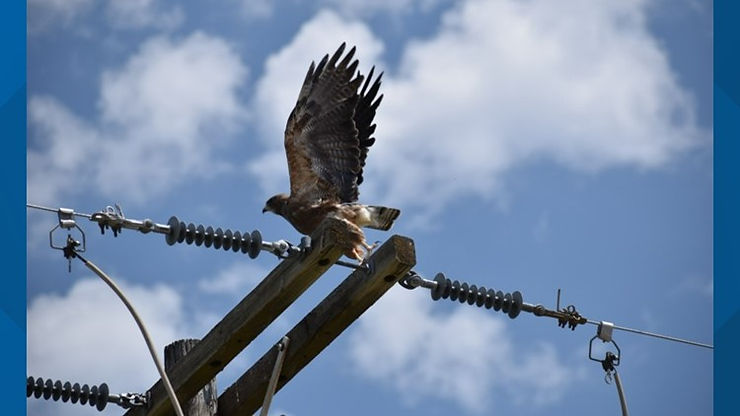By: Melody Dou
In a recent study, researchers walked 122 miles by power lines in Idaho, Oregon, Utah, and Wyoming to pick up 410 dead birds for further research.
Birds are often found dead by power lines, so it’s easy to assume that they have all been electrocuted, but is that the only cause of death?
“We really need X-rays to understand fully what may have happened,” said Eva Thompson, a wildlife biologist at Boise State University in Idaho.
Turns out, “most of them were coming back with bullet fragments in them or shotgun pellets,” she said. Apparently, 66 percent of birds out of the 175 birds with a determined cause of death were shot.
“This is the first time somebody has done a large-scale study at multiple sites to figure out if this is a problem,” said Todd Katzner, a research wildlife biologist at the United States Geological Survey in Boise, “This is way more prevalent than we had previously understood.”
“The dead birds were mostly ravens and raptors … killing these animals is illegal under several U.S. laws,” According to The New York Times. Shooting may place species like the golden eagles in danger.
In two of the “bird searching” sites, all dead birds were shot, but in another, 39 percent of dead birds were shot.
According to the New York Times, “It’s not clear how widely applicable the findings are, but even the lowest percentage makes for a large number of birds.”
Although “some large electrical utilities spend hundreds of thousands of dollars per year to reduce the risk of avian electrocutions,” according to The New York Times, electrocutions are still a problem.
According to a study done by Dr. Brian Millsap and his colleagues, in parts of Texas and Mexico, 34 percent of golden eagles that live until they leave their nests get electrocuted before they turn one.
The work done on researching bird shootings is important for protecting birds. “What’s essential in order to stop the declines of birds is to understand what’s causing the declines of birds,” said Pete Marra, an ornithologist at Georgetown University.
Sources:
https://www.nytimes.com/2023/08/03/science/birds-shot-power-lines.html











